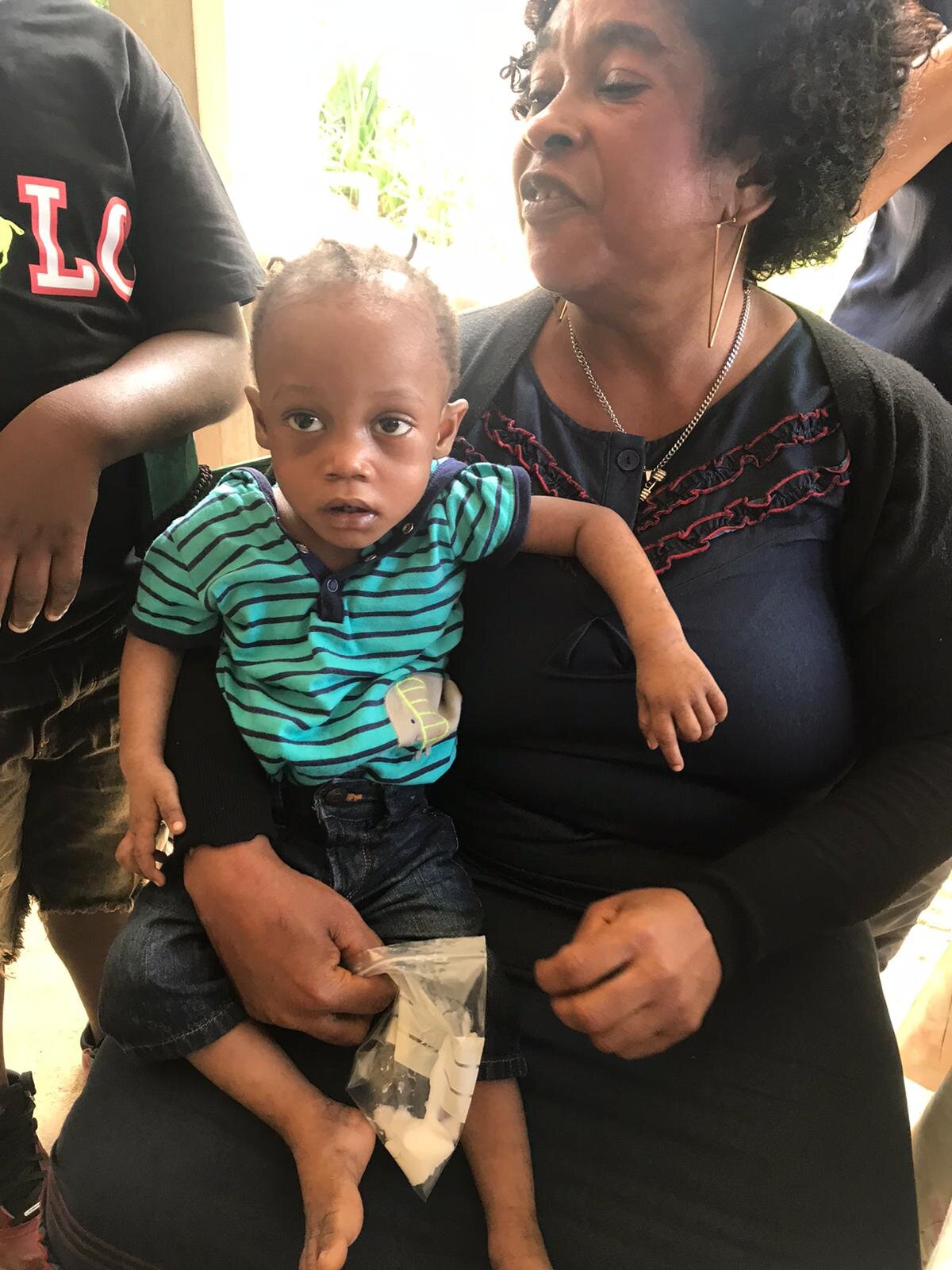Haiti Field Diary - Part 3
FIELD DIARY BY DR. SHARON KRONFELD SHAUL currently on site in Haiti
NATAN and Operation Blessing Earthquake Relief Mission, Haiti
Warning: This post contains graphic images of medical conditions which may be disturbing to some viewers
Monday, September 20, 2021
Working in a primary care clinic in the Third World can be frustrating.
First, cultural differences make it difficult to truly understand the patient's complaints and condition. Second, the lack of equipment forces us to base care on physical examination using the most basic means to arrive at a diagnosis.
Then the frustration comes down to the question: What do we do now? The difficulty of medical treatment when medications are lacking ...
We go out early each morning to a different village; set up our field clinic and work until dark. In the evening after we shower, when the doctor's bags are refilled with antibiotics and ointments, thoughts and questions arise …
Did I act correctly?
Is the work I did today meaningful?
The 60-year-old man who went to the clinic due to weakness that makes it difficult for him to work in the field, abdominal pain, lack of appetite and weight loss in recent months. His test reveals anemia.
In our medical world, these symptoms make us suspect malignant disease.
And here .. Is there a need for further clarification? What does the diagnosis mean for him? Will raising suspicion benefit him? Should he be referred to the hospital? What will they do at the hospital?
There is no simulation. No colonoscopy or other invasive tests. Blood tests are only basic.
In order to get to the hospital, he must invest a sum of money that, if he succeeds in raising, will make it very difficult for him.
Many avoid going to the hospital because of the limited treatment and the cost of traveling in a moped "taxi" (no public transportation). I decided to treat with iron.
Did I do the right thing?
Working in a field clinic requires creativity. For example in the absence of an inhalation device, we improvised using disposable inhalers and plastic water bottles.
As part of our joint work with the OPERATION BLESSING organization, we were privileged to cooperate with an operation that aims to enable "life-changing surgeries" for the people of the villages.
When we find patients whose medical condition and examination raises the suspicion that their treatment may be life-saving or life-changing, we pass their details with photos and a telephone number of a contact person on to the organization's representative.
The organization assists in funding and organizing an appointment at the hospital. If there is the need for surgical treatment, the organization finances transportation, accommodation, food and of course the cost of hospitalization.
I will give 3 examples:
We tested Debenz, a two-year-old boy. His mother is very young, and he grew up with his grandmother. At the time of his birth, they were told at the hospital that he was suffering from a heart defect, but they had not been medically monitored since. They are unable to follow up on the test. He has difficulty breathing, has little physical activity and is small for his age. On examination, a strong systolic murmur is heard across the chest. Since his birth he has not been examined by a doctor.
Paulita, a 25-day-old baby was born at home. Since his birth he has been increasingly restless. His abdomen is swollen, and prominent veins are visible on the skin of the abdomen. He suffers from jaundice.
His examination raised a suspicion of a condition that required surgical treatment as soon as possible.
Devandi, an active and opinionated 55-year-old man. Over the last three years he has gradually lost his sight to the point of blindness. His examination raised suspicion of cataract - a condition in which simple surgical treatment allows the vision to be restored. He is unable to get to the nearest town to be tested.
We sent the medical details and photos to the doctor, the organization's representative in the capital. In most cases we have involved the regional doctor in order to have the contact person monitoring the patient.
We were left with great hope in our hearts. We will continue to follow up(Haiti Field Diary - Part 4).
Often in the delegation summaries and mailings to potential donors we indicate the number of patients examined and the number of villages we have reached. Dry numbers, summed up daily.
But as a physician in the field, it’s not a question of totaling up numbers, but rather of personal, one by one encounters. This is what leaves room for hope. The one-by-one stories are meaningful. It has often been said of our work that this is "a drop in the ocean." I try to concentrate on that drop and fill it with as much professionalism and love as I can.
Natan volunteers Haiti Earthquake Relief Operation







